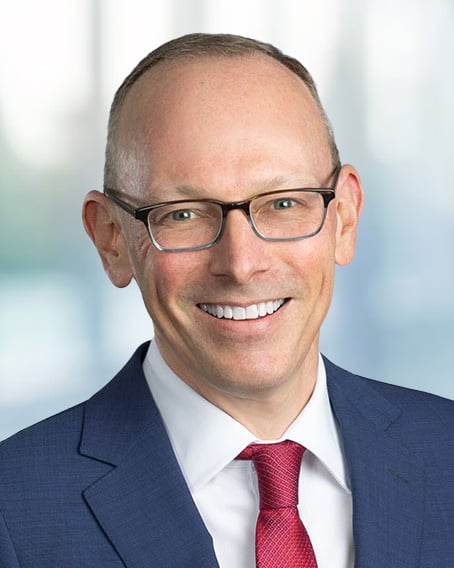In this Ropes & Gray podcast, litigation & enforcement partner Ryan Rohlfsen, who is co-chair of the firm’s global anti-corruption and international risk practice, is joined by Jerry Kral, SVP, chief risk, ethics & compliance officer at Brown-Forman Corporation, for an enthusiastic discussion about emerging risks and trends in the modern day market, as well as practical advice for the future.
Transcript:
Ryan Rohlfsen: Greetings, everyone. This is Ryan Rohlfsen, a partner with Ropes & Gray, and co-chair of the firm's global anti-corruption and international risk practice. I'm joined today by Jerry Kral, who's the SVP, chief risk, ethics & compliance officer at Brown-Forman Corporation. Brown-Forman might not be a name you know immediately, but I'll bet you know several of its brands—that includes Jack Daniel's Tennessee Whiskey, and my personal favorite, Woodford Reserve Bourbon. It's a multi-billion dollar, global, publicly traded enterprise in a highly regulated and high-profile industry. At Brown-Forman, Jerry's responsible for enterprise risk management, crisis management, compliance, as well as other functions.
It's really a pleasure to have you, and I'd like to talk a bit about some of the key issues that you've been facing in your role and also what you're seeing in the market more generally. Recently, particularly you, like many others in similar roles at other companies, have had to wear many hats, sometimes at the same time. So, I guess to start, tell me a little bit about Brown-Forman's operations—what's keeping you up at night these days?
Jerry Kral: Thanks, Ryan. I'm honored to be here today. I always enjoy our conversations—they always go down an interesting path, so we'll have to see where this goes today. To give a high-level view of our operations, we're a global company of about 4,700 employees. Brown-Forman is based in Louisville, Kentucky, where we employ nearly 1,000 people across both corporate and production roles. Our production facilities include distilleries, bottling operations, and a cooperage, which is where we make the barrels for maturing our whiskeys. Fun fact: Brown-Forman is the world's largest producer of whiskey barrels and is the only major distiller in the world that owns and manufacturers its own barrels. But we aren't just a U.S. company—far from it. Our brands are sold in over 170 countries, with almost half of our revenue coming from outside the U.S. We have sales offices around the globe, and a major tequila production facility in Mexico, and distribution companies in a number of other countries. Just this past year, we established our own distribution organizations in the United Kingdom and Thailand, and recently announced that we'll be implementing our own distribution plans in Russia, Belgium, and Taiwan.
With all that, it comes as no surprise, or it leaves little to the imagination, especially for listeners of this podcast to realize that there's more than enough risk to go around. But you also asked me, "What keeps me up at night these days?" The traditional risks do not keep me up at night. The efforts that have been made to reimagine the future looking at where employees are going to work in the office, outside of the office, supply chain challenges and so on and so forth, that doesn't keep me up at night. The rapidly evolving role of the corporation in society is what's keeping me up at night. It really is an emerging risk, and it can materialize very quickly. From Larry Fink's annual letter to CEOs calling for more action related to climate change, to consumer groups demanding a company take position on divisive political issues, the interest people are taking related to corporate actions and decisions is raising the stakes exponentially. You don't have to look very far in the media to see where companies thought they were doing the right thing and found themselves in a real public relations pickle. The goal is to be very selective in terms of how and of what to say, and when to say it, but you can feel an enormous amount of pressure in the moment to be more vocal about your corporate positions.
Ryan Rohlfsen: Yes, but this phrase, I guess, “there's two sides of this,” right? There's part of it that is risk, but then I can also see business opportunity that I know companies like Brown-Forman also look to capitalize on, even within this turmoil, and all these different issues, and evolving landscape. How do you think about that side of the coin?
Jerry Kral: It's definitely an opportunity. For a company that lives its core values, it's easier than for a company that doesn't. Core values can be the “glue” that allows leaders, employees, and consumers to see issues through the same lens and understand the direction, even if they may not agree. The core values not only have to drive decisions, but also actions—that’s the real opportunity, especially when no one is looking. Our core values are: integrity, trust, respect, teamwork, and excellence. We've adopted the phrase, “values drive decisions,” where we lean in to those core values when we're making decisions, especially the challenging and complex decisions.
Ryan Rohlfsen: Jerry, I want to circle back on the sleepless nights point. You made a good point that the interest in corporate actions and decisions is raising the stakes exponentially. What do you think will be the long-term impacts of that explosion, raising the stakes, that we've seen over the last year or so on today's companies?
Jerry Kral: Historically, companies made decisions based on optimizing shareholder and investor return. That's not the same today. Many companies are considering other stakeholders and factors into the decision-making framework—communities, influencers, sustainability, politics, etc. When everyone is a stakeholder and carries a bullhorn, it is critical that decisions are thoroughly vetted. Not everyone is going to agree with a decision, and some may choose to voice their perspectives. The company's response is key. A good example is COVID risk mitigation. Balancing what is best for business continuity and employee engagement is very tricky—not everyone will be satisfied, but a decision can trigger a lot of responses. Once again, we lean in to “values drive decisions,” and we seriously consider integrity, trust, respect, teamwork and excellence when we're making these complex and challenging decisions.
Ryan Rohlfsen: That's an interesting point. A lot of the folks who are going listen to this podcast are obviously lawyers and compliance professionals. When you think about if you're giving roundtable-type advice or discussion to compliance professional colleagues, what things would you pass along to them or give your thoughts about how to handle these sort of things from a compliance perspective?
Jerry Kral: Let's go back to the bullhorn and take a look at social media. Historically, a company's social media policy was focused on preventing the dissemination of material non-public information. Now it is possible that an employee or a business partner's personal opinion can be attributed to the company. At Brown-Forman, we updated our policy and have been encouraging employees to share their opinions and “like” certain stories, but in doing so, it's very important that they make it clear that they are their own opinions and not that of Brown-Forman. The more senior the employee, the more important social media awareness becomes. We are in a hyper state of awareness.
Ryan Rohlfsen: Jerry, another point—when you put on your hat as the chief risk officer, thinking about risk, one of the things I'm thinking about listening to you talk is there's a lot of stuff here. One might say when you're trying to sift through all this information, the information might become a lot of noise, and they make decision making and risk assessment very challenging. How do you sift through all of that? How has the last year or so changed how you address your role as the chief risk officer for Brown-Forman?
Jerry Kral: We had to rethink our approach to risk identification, as the old approach was too time consuming and lacked flexibility. About nine months ago, we shifted to a dynamic risk register by looking at risk through three lenses: internal risks, risk radar (or external risks), and near misses. Our collection mechanisms are a combination of interviews and media monitoring. Once a quarter, we convene a meeting and discuss the likelihood, magnitude, and preparedness of frequently referenced risks. The risks that rise to the top are included in a dashboard and actively managed. Our executive leadership team reviews the dashboard at each of their meetings. In addition, we often take a pulse from internal audit, regional finance, human resources, and other country leaders.
Ryan Rohlfsen: This feels like a different speed than maybe what we've done in the past. Do you think this is sort of the “new normal” model, or do you anticipate even more changes or even going backwards, if you will, to prior models as COVID hopefully levels out over the next year or so?
Jerry Kral: We have no choice but to assume that this is the “new normal” and adjust accordingly. We've been in this for 18-20 months now, and probably will be for many more. So, I had to rely on a professor from college, Dr. Jack Moody, who would say that after 15-18 months, you're in the long-term, and you need to adjust accordingly. We need to build up our anticipatory reflexes and agility. We dig in deep on near misses. Ripping an issue from the headlines, we conform it to our industry or company and play out “mini-scenarios.” These “mini-scenarios” require our leaders to quickly assess the situation and consider paths forward. These risks or issues that we pull out, we identify both the threats—short-term and long-term—and opportunities—short-term and long-term—because some of these threats can be a competitive advantage, and we need to look at them as such and analyze them through that lens.
Ryan Rohlfsen: Jerry, when you talk about "mini-scenarios," are you talking about tabletop exercises you're doing with the leadership, or what are you doing as a practical matter to try to help evolve these strategies and rethink risk, as well as potential reactions to events?
Jerry Kral: Ryan, you really have to focus on agility and efficiency when we talk about these tabletops. We are ripping a headline from the front pages and putting it into context to our industry or even our specific business. One, two, or three PowerPoint pages—we insert it into existing team agendas, and we ask them to work through these scenarios. What would be their first response, second response? We want to understand what they see as a threat, what they see as a potential opportunity. We want them to be developing the muscle memory so that as issues come forward, and we know they will, and they're going to materialize quickly, that they are ready either for that specific scenario or a similar scenario. But at the end of the day, the goal is muscle memory.
Ryan Rohlfsen: Jerry, thanks again. It's always a pleasure speaking to you—and your enthusiasm is certainly contagious, as well as your practical, actionable advice and thoughts that you have. For more information about the topics we discussed, feel free to reach out to me directly or visit Ropes & Gray's website at www.ropesgray.com. You can also subscribe to this series wherever you typically listen to podcasts, including Apple and Spotify. Thanks again for listening.
For more information or to contact Jerry Kral, please visit his LinkedIn profile.

Speaker

Stay Up To Date with Ropes & Gray
Ropes & Gray attorneys provide timely analysis on legal developments, court decisions and changes in legislation and regulations.
Stay in the loop with all things Ropes & Gray, and find out more about our people, culture, initiatives and everything that’s happening.
We regularly notify our clients and contacts of significant legal developments, news, webinars and teleconferences that affect their industries.



